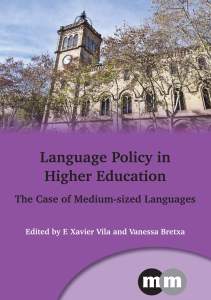Language Policy in Higher Education
English is becoming more and more common as the language of instruction in universities all over the world. However, in many countries efforts are being made to preserve indigenous languages. In this post, F. Xavier Vila and Vanessa Bretxa, the editors of our recent book Language Policy in Higher Education outline the recent debates within language policy that form the basis of their book.In 2012, the leading Italian public university Politecnico di Milano attracted headlines from all over the world when it announced it would move to all-English instruction. The announcement stirred the growing debate going on all over Europe about the convenience of increasing the role of English as the vehicular language in non-English-speaking countries. One year later, it was France’s turn to discuss the issue of the Franglais row: Is the English language conquering France?, to the extent that the national government had to make a decision about the role of English in French universities. Simultaneously, on the other side of the ocean, in the now economically booming Bolivia, the first promotion of students from the three recently created indigenous universities were preparing their graduation theses neither in Spanish or English, but rather in the indigenous Aymara, Quechua and Guarani languages. Their graduation in August 2014 was welcome as a crucial step in order to promote social cohesion and wealth redistribution and overcome centuries of external and internal colonialism.
What’s going on in the field of language policies in higher education? Once the realm of Latin, in the 19th and 20th centuries universities adopted massively the national and colonial languages following the heyday of the Western nation states. Universities formed the intellectual elites that led the cultural and scientific progress of the last century, and produced the leaders and the cadres that ruled the world. But globalization and the commodification of knowledge are transforming the environment for higher education also in its linguistic dimension. English-medium courses are proliferating all over the world, sometimes due to the genuine desire to attract international talent, partly also as a strategy to obtain resources from abroad. But is the development of English-medium education just part of a more complex story?
In a context where the major languages are said to be succumbing to the urge of English, what are the prospects of medium-sized languages that have achieved the status of lingua academica
to retain it? Will they find a place in the new world of higher
education, or will they rather be reduced to the status of mere
vernaculars in a near future? And what about those that have still not
made it? Is it still sound to spend time and money to raise their status
or would it be more adequate to try to content their speakers with a
reasonably stable functional distribution of languages? Is it still
worth increasing the number of linguae academicae?
These and other related questions are tackled in the volume Language Policy in Higher Education: The Case of Medium-Sized Languages
by a team of well-renowned specialists in language policy. Based on the
close examination of a number of medium-sized languages from Finland to
South Africa and from Israel to Catalonia, the volume compares the
trajectories of languages that have made it in higher education and
others that didn’t, analyses their current state, and seeks to extract
lessons of general applicability. And while their results may be read
from different perspectives, one of them seems to be clear: in the era
of globalization, there seems to be ample room for multilingualism in
academia, but it will probably never be the way it used to be.

Cap comentari:
Publica un comentari a l'entrada